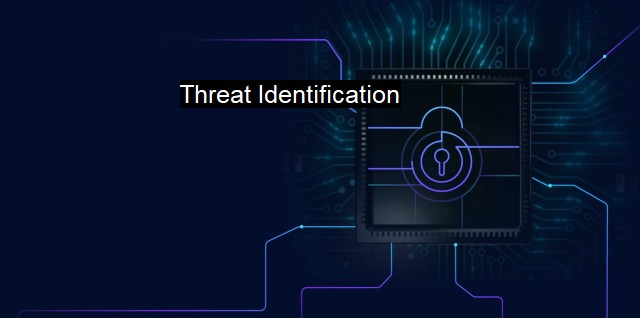What is Threat Identification?
The Importance of Threat Identification in Cybersecurity: Techniques and Methods for Mitigating Risk
Threat identification refers to the process of identifying and recognizing potential cybersecurity threats and vulnerabilities that could be exploited by malicious actors. Threat identification is critical because it allows organizations and individuals to prioritize their security efforts and mitigate risk effectively.threat identification involves using a variety of tools and techniques to monitor and analyze the behavior of computer systems and networks for signs of a potential attack or breach. This includes analyzing network traffic, monitoring system logs, and using intrusion detection systems to identify and flag suspicious activities.
One of the main challenges of threat identification is that cyber threats are constantly evolving, and attackers are becoming increasingly sophisticated. To stay ahead of these threats, organizations must constantly update and upgrade their technology and security protocols to identify new threats and vulnerabilities as they emerge.
One common method of threat identification is to use antivirus software. Antivirus software works by scanning files and directories for known viruses and malware, and alerting the user if any potential threats are detected. While antivirus software can help to protect against known threats, it is often ineffective against emerging or unknown threats, which is why additional security layers are needed.
Another important aspect of threat identification is risk assessment. Risk assessment involves identifying the potential impact of different cyber threats on an organization or individual, and developing mitigation strategies to minimize the impact. The goal of risk assessment is to identify the most likely threats and prioritize security efforts accordingly.
threat identification is a crucial aspect of effective cybersecurity. To stay protected from cyber threats, individuals and organizations must be vigilant and proactive in monitoring their systems for signs of potential attack. By using a combination of tools and techniques, including antivirus software, intrusion detection systems, and risk assessment, they can better defend against potential threats and minimize their chances of falling victim to a cyberattack.

Threat Identification FAQs
What is threat identification in cybersecurity?
Threat identification is the process of recognizing potential security threats to a computer system, network, or data. This involves identifying possible vulnerabilities in the system that could be exploited by hackers, malware, or other malicious actors.How does antivirus software help with threat identification?
Antivirus software uses a variety of techniques to identify and block potential threats. This includes scanning files and programs for known malware signatures, analyzing behavior patterns to detect suspicious activity, and monitoring network traffic for signs of an attack. The software can then alert the user and take action to prevent the threat from causing harm.What are some common types of cybersecurity threats that need to be identified?
Some common cybersecurity threats include viruses, worms, trojans, ransomware, spyware, and phishing attacks. These threats can come from a variety of sources, including email attachments, malicious websites, and software downloads. Identifying these threats is essential for protecting against data breaches, theft of personal information, and other forms of cybercrime.How can businesses improve their threat identification processes?
Businesses can improve their threat identification processes by implementing a comprehensive cybersecurity strategy that includes regular software updates, network monitoring, and employee training on safe computing practices. They can also work with a cybersecurity provider to perform regular vulnerability assessments and penetration testing to identify weaknesses in their systems and prevent potential threats from taking hold.| | A | | | B | | | C | | | D | | | E | | | F | | | G | | | H | | | I | | | J | | | K | | | L | | | M | |
| | N | | | O | | | P | | | Q | | | R | | | S | | | T | | | U | | | V | | | W | | | X | | | Y | | | Z | |
| | 1 | | | 2 | | | 3 | | | 4 | | | 7 | | | 8 | | |||||||